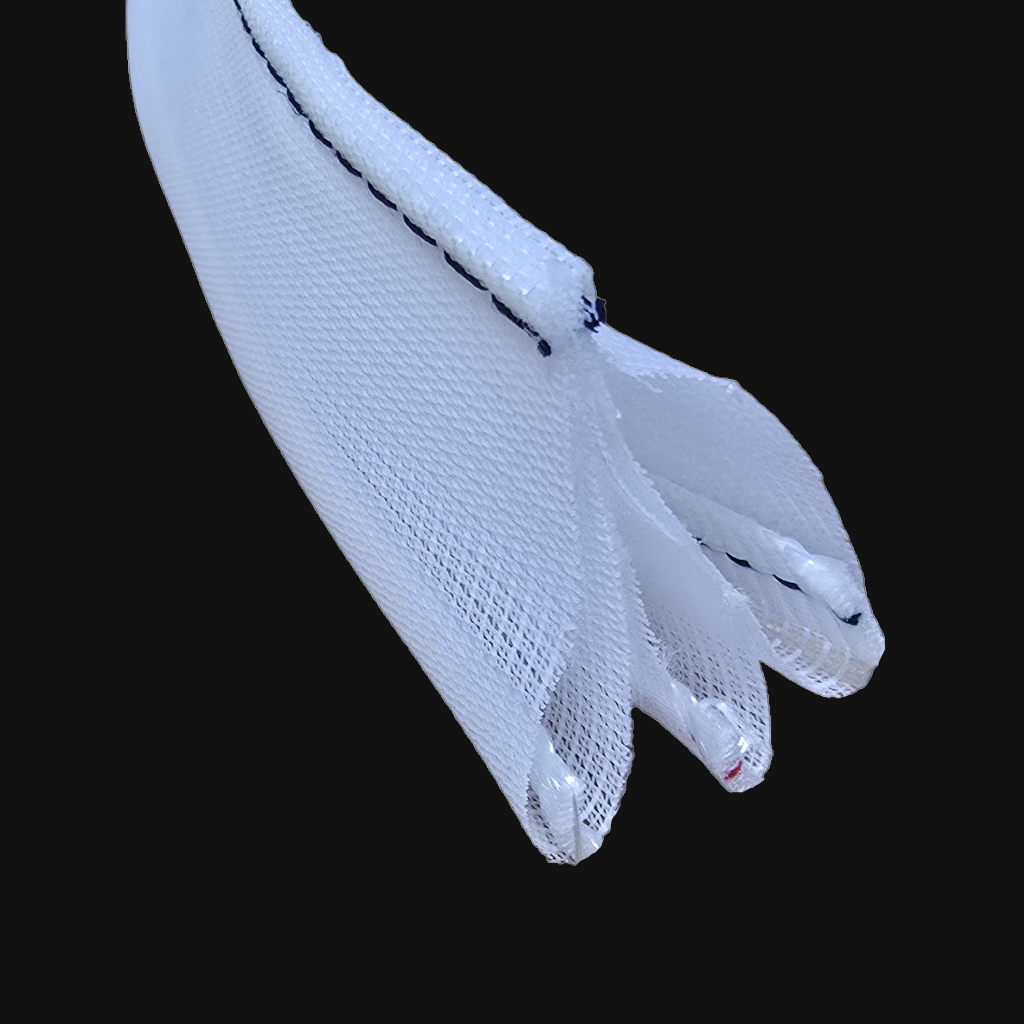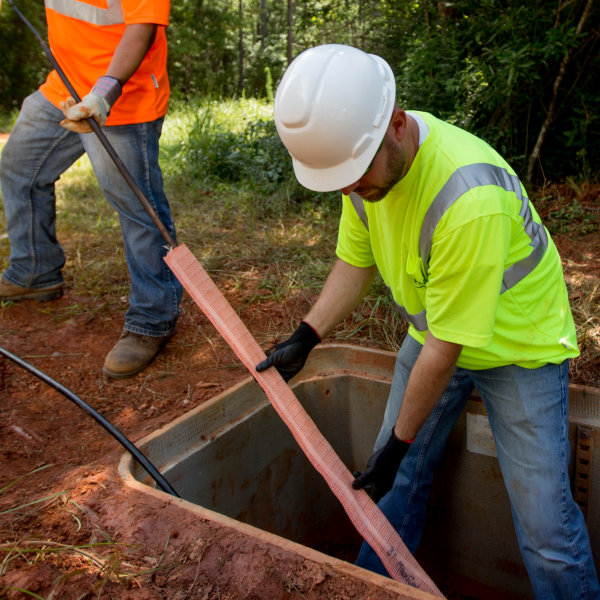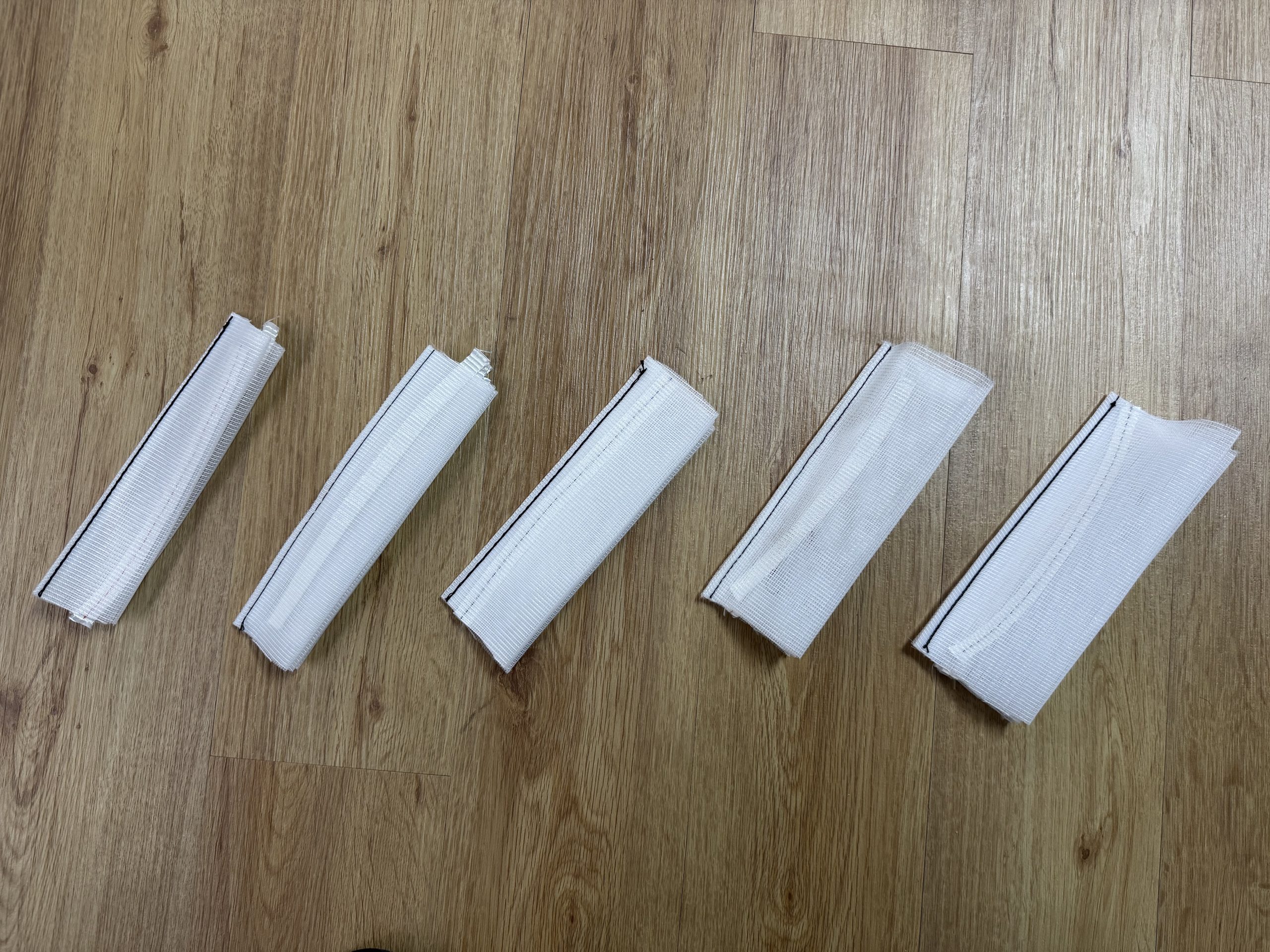Fabric innerducts have become an indispensable asset across a wide range of industries, offering unique advantages tailored to each sector’s specific needs. Here’s how fabric innerducts can enhance operations in broadband, power/utilities, wireless backhaul, data centers, telecom, government, military, municipalities, and education, healthcare, airport, and corporate campuses.

Broadband
In the broadband industry, seamless network deployment is crucial for delivering high – speed internet to end – users. Fabric innerducts play a vital role in optimizing cable management within broadband networks.
Cable Organization
With the increasing demand for multiple broadband services such as high – speed internet, IPTV, and VoIP, networks are becoming more complex. Fabric innerducts allow for the organized installation of various cables, including fiber – optic and copper cables. They can be easily routed through existing conduits or along walls, ceilings, and floors, keeping the cable infrastructure tidy and easy to manage.
Space Optimization
By maximizing the available conduit space, fabric innerducts reduce the need for additional conduit installations. This not only saves on material costs but also simplifies the installation process. Moreover, their ability to increase cable density means that more cables can be installed in a given area, accommodating future network expansions and upgrades.
Protection and Durability
Fabric innerducts provide a protective layer for cables, shielding them from physical damage, moisture, and other environmental factors. This ensures the longevity and reliability of the broadband network, minimizing downtime and service interruptions for customers.
Power/Utilities
In the power and utilities sector, fabric innerducts contribute to the efficient management of electrical and communication cables.
Safety and Compliance
Proper cable management is essential for safety in power plants, substations, and utility distribution networks. Fabric innerducts help to separate different types of cables, reducing the risk of electrical short – circuits and interference. They also comply with industry safety standards and regulations, ensuring the safe operation of power and utility systems.
Easy Maintenance
The flexibility of fabric innerducts makes it easy to access and maintain cables. Technicians can quickly locate and replace faulty cables without having to disrupt the entire cable infrastructure. This reduces maintenance costs and downtime, ensuring the continuous supply of power and the reliable operation of utility services.
Outdoor Applications
Fabric innerducts are suitable for outdoor installations in power and utility networks. They are resistant to harsh environmental conditions such as extreme temperatures, UV radiation, and moisture, making them ideal for protecting cables in substations, transmission lines, and distribution poles.
Wireless Backhaul
Wireless backhaul is the backbone of modern telecommunications, enabling the transfer of large amounts of data between base stations and the core network. Fabric innerducts are essential for optimizing wireless backhaul networks.
High – Capacity Installation
With the increasing demand for high – speed wireless data services, wireless backhaul networks require the installation of high – capacity cables. Fabric innerducts can accommodate fiber – optic cables, which offer high – bandwidth and low – latency transmission. Their ability to increase cable density allows for the installation of multiple high – capacity cables in a limited space, meeting the growing demand for wireless data.
Protection from Environmental Factors
Wireless backhaul networks are often exposed to harsh environmental conditions, such as extreme weather, electromagnetic interference, and physical damage. Fabric innerducts provide a protective barrier for cables, shielding them from these factors and ensuring the reliable operation of the wireless backhaul network.
Simplified Network Expansion
As the demand for wireless data continues to grow, wireless backhaul networks need to be expanded frequently. Fabric innerducts make it easy to add new cables to the existing infrastructure, allowing for seamless network expansion without the need for extensive construction or disruption of existing services.
Data Centers
Data centers are the nerve centers of the digital world, housing thousands of servers and storage devices that process and store vast amounts of data. Fabric innerducts are crucial for efficient cable management in data centers.
Cable Management and Organization
With the increasing number of servers and storage devices, data centers are becoming more complex. Fabric innerducts help to organize the cables, keeping them neatly arranged and easily accessible. This simplifies the installation, maintenance, and upgrade of servers and storage devices, reducing downtime and improving the overall efficiency of the data center.
Space Optimization
Data centers have limited space, and optimizing the use of available space is essential for cost – effectiveness. Fabric innerducts increase cable density, allowing more cables to be installed in a smaller area. This eliminates the need for additional conduit installations and reduces the overall footprint of the cable infrastructure.
Thermal Management
Fabric innerducts can also contribute to thermal management in data centers. By separating cables and allowing for proper airflow, they help to prevent overheating of servers and storage devices. This ensures the reliable operation of the data center and reduces the risk of equipment failure.
Telecom
In the telecom industry, fabric innerducts play a vital role in the deployment and management of communication networks.
Fiber – Optic Cable Protection
With the increasing reliance on fiber – optic cables for high – speed communication, protecting these cables is crucial. Fabric innerducts provide a physical barrier that shields fiber – optic cables from physical damage, moisture, and other environmental factors. This ensures the reliability and longevity of the telecom network.
Easy Cable Installation and Upgrades
Fabric innerducts are flexible and easy to install, making them ideal for telecom network installations. They can be installed in existing conduits or along walls and ceilings, reducing installation time and costs. Moreover, their ability to increase cable density allows for easy upgrades and expansion of the telecom network without the need for extensive construction.
Indoor and Outdoor Applications
Fabric innerducts are suitable for both indoor and outdoor telecom installations. In indoor environments, they can be used in telecom rooms, server rooms, and telecommunications closets to manage cables. In outdoor environments, they can be used to protect cables along telecommunication poles and in underground conduits.
Government
Government agencies require reliable and secure communication networks for their day – to – day operations. Fabric innerducts can enhance the efficiency and security of these networks.
Secure Cable Management
Government communication networks often carry sensitive information, and protecting the cables that transmit this information is crucial. Fabric innerducts provide a secure and protected environment for cables, reducing the risk of unauthorized access, tampering, and damage.
Space – Efficient Installation
Government buildings and facilities have limited space, and optimizing the use of available space is essential. Fabric innerducts increase cable density, allowing for more efficient cable installation in these facilities. This simplifies the maintenance and upgrade of government communication networks, reducing costs and downtime.
Long – Term Reliability
Fabric innerducts are designed to provide long – term reliability and durability. They can withstand harsh environmental conditions and heavy use, ensuring the continuous operation of government communication networks over an extended period.
Military
Military operations require robust and secure communication networks that can withstand the harshest conditions. Fabric innerducts are essential for the deployment and management of military communication networks.
Tough and Durable
Military communication networks are often deployed in harsh environments, such as deserts, jungles, and combat zones. Fabric innerducts are made from tough and durable materials that can withstand extreme temperatures, physical impact, and chemical exposure. This ensures the reliability and longevity of military communication networks in these challenging environments.
Secure Cable Protection
Military communication networks carry classified and sensitive information, and protecting the cables that transmit this information is of utmost importance. Fabric innerducts provide a high level of cable protection, preventing unauthorized access, tampering, and damage.
Rapid Deployment
In military operations, rapid deployment of communication networks is crucial. Fabric innerducts are easy to install and can be quickly deployed to establish communication infrastructure in the field. This allows military forces to communicate effectively and maintain situational awareness in real – time.
Municipalities
Municipalities need to manage a wide range of communication and utility networks, including street lighting, traffic control, and public safety systems. Fabric innerducts can help municipalities optimize their cable management.
Efficient Cable Installation
Fabric innerducts allow for the efficient installation of cables for various municipal applications. They can be installed in existing conduits or along streets, sidewalks, and public buildings, reducing installation time and costs. Moreover, their ability to increase cable density allows for the installation of multiple cables in a limited space, simplifying the management of municipal networks.
Easy Maintenance and Upgrades
The flexibility of fabric innerducts makes it easy to access and maintain cables for municipal applications. Technicians can quickly locate and replace faulty cables without having to disrupt the entire cable infrastructure. This reduces maintenance costs and downtime, ensuring the continuous operation of municipal services.
Space Optimization
Municipal areas have limited space, and optimizing the use of available space is essential. Fabric innerducts increase cable density, allowing for more efficient cable installation in these areas. This eliminates the need for additional conduit installations and reduces the overall footprint of the cable infrastructure.
Education, Healthcare, Airport, and Corporate Campuses
These campuses require reliable and efficient communication and data networks to support their operations. Fabric innerducts can enhance the performance of these networks.
Support for High – Density Environments
Education, healthcare, airport, and corporate campuses often have high – density environments with a large number of users and devices. Fabric innerducts can accommodate the increasing number of cables required to support these users and devices, ensuring the reliable operation of the network.
Easy Network Expansion
As these campuses grow and expand, their network requirements also increase. Fabric innerducts make it easy to add new cables to the existing infrastructure, allowing for seamless network expansion without the need for extensive construction or disruption of existing services.
Improved Aesthetics
Fabric innerducts can improve the aesthetics of campuses by hiding cables and keeping them neatly arranged. This creates a more pleasant and professional environment for students, patients, passengers, and employees.
Education
In the realm of education, from primary schools to large universities, a reliable and well – organized network infrastructure is crucial for teaching, learning, and research.
Streamlined Classroom Connectivity
Fabric innerducts can be used to install network cables throughout classrooms. This ensures that students and teachers have seamless access to the internet for online research, educational software, and interactive learning platforms. The increased cable density provided by fabric innerducts allows for the installation of multiple cables, supporting multiple devices per student, such as laptops, tablets, and smart boards.
Campus – wide Network Expansion
As schools and universities expand their campuses or upgrade their technology, fabric innerducts make it easy to add new cables. This could include new high – speed fiber – optic cables for faster data transfer or additional Ethernet cables to support more devices. The flexibility of fabric innerducts allows for quick and efficient installations without disrupting the existing network infrastructure.
Protection in Harsh Environments
In some educational institutions, such as science labs or industrial training facilities, the environment can be harsh. Fabric innerducts protect the network cables from chemicals, dust, and physical damage, ensuring the reliability of the network and the safety of the students and staff.
Healthcare
In the healthcare industry, where patient safety and the efficient delivery of medical services are of utmost importance, fabric innerducts play a vital role in network infrastructure.
Medical Device Connectivity
Fabric innerducts can be used to install network cables that connect medical devices such as patient monitors, diagnostic equipment, and electronic medical records systems. The increased cable density allows for the installation of multiple cables, supporting the growing number of connected medical devices in modern hospitals. This ensures that medical staff have real – time access to patient data and can provide timely and accurate care.
Data Security and Privacy
Healthcare facilities handle sensitive patient data, and protecting this data is of utmost importance. Fabric innerducts provide a secure environment for network cables, reducing the risk of data breaches and unauthorized access. The physical protection offered by fabric innerducts, such as shielding from electromagnetic interference, also helps to ensure the integrity of the data being transmitted.
Easy Maintenance and Upgrades
As medical technology continues to evolve, healthcare facilities need to be able to upgrade their network infrastructure to support new devices and applications. Fabric innerducts make it easy to add new cables or replace existing ones, minimizing downtime and ensuring the continuous operation of medical devices and systems.
Airport
Airports are complex environments with a high demand for reliable and efficient network connectivity to support various operations, including passenger services, security, and air traffic control.
Passenger Services
Fabric innerducts can be used to install network cables for Wi – Fi access points, ticketing systems, and boarding gate displays. The increased cable density allows for the installation of a large number of cables, ensuring fast and reliable internet access for passengers throughout the airport. This enhances the passenger experience and helps airlines provide better in – flight connectivity services.
Security and Surveillance
Airports rely on advanced security and surveillance systems to protect passengers and facilities. Fabric innerducts can be used to install network cables for cameras, access control systems, and alarm systems. The physical protection and flexibility of fabric innerducts ensure the reliable operation of these critical security systems, helping to prevent security breaches and maintain the safety of the airport.
Air Traffic Control
Air traffic control systems require high – speed and reliable network connectivity to communicate with aircraft and manage air traffic. Fabric innerducts can be used to install network cables for the communication links between air traffic control towers and aircraft. The increased cable density and protection provided by fabric innerducts help to ensure the seamless operation of these critical systems, reducing the risk of communication failures and improving air traffic safety.
Corporate Campuses
Corporate campuses, which may include office buildings, research and development facilities, and data centers, require a robust and scalable network infrastructure to support business operations.
Office Connectivity
Fabric innerducts can be used to install network cables in office buildings, providing high – speed internet access and support for various office applications. The increased cable density allows for the installation of multiple cables, supporting a large number of employees and devices. This ensures that employees can work efficiently and access the resources they need to perform their jobs.
Research and Development
In research and development facilities, where there is a high demand for data transfer and collaboration, fabric innerducts are essential for installing high – speed network cables. The flexibility of fabric innerducts allows for easy expansion of the network as new research projects and technologies emerge, enabling researchers to work more effectively and share data seamlessly.
Data Center Integration
Corporate campuses often have data centers that require a reliable and efficient network infrastructure for data storage and processing. Fabric innerducts can be used to install network cables between data centers and office buildings, as well as within the data center itself. The increased cable density and protection provided by fabric innerducts help to ensure the continuous operation of data centers and the efficient transfer of data.
Future – Proofing
Fabric innerducts offer the flexibility and scalability needed to future – proof corporate campuses. As businesses grow and evolve, the network requirements will change. Fabric innerducts make it easy to add new cables or upgrade existing ones, allowing corporate campuses to adapt to new technologies and business needs without the need for major infrastructure overhauls.
In conclusion, fabric innerducts are a versatile and essential solution for a wide range of applications, including broadband, power/utilities, wireless backhaul, data centers, telecom, government, military, municipalities, education, healthcare, airports, and corporate campuses. Their ability to maximize conduit space, reduce pulling tension, provide protection for cables, and support future – proofing makes them a valuable investment for any organization looking to optimize its network infrastructure and improve its overall operations.



